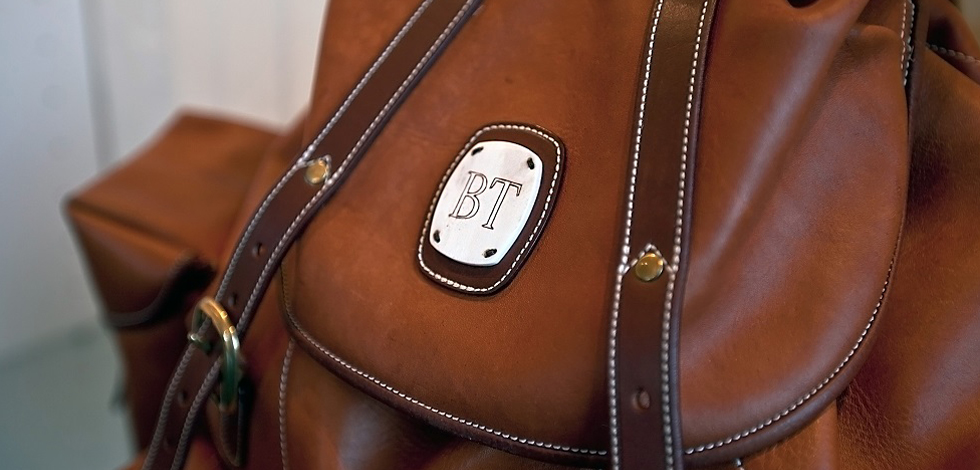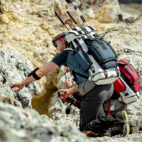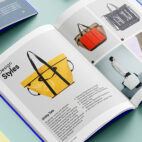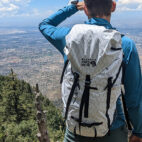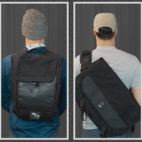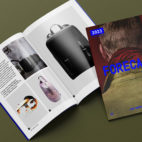The Noble Legacy of Böle Tannery
Dusk is setting over Böle, a serene village in the Swedish Arctic. Smoke billows from an outdoor sauna, from which my host Jan and I are cooling off by the banks of the Pite River. Ice is days from crisping the forests of birch and spruce, and I – we – are stark bollock naked.
Pronounced burr-leh, ‘Böle’ means ‘place to live’ in Swedish, and it’s perhaps for this reason, figuratively and literally, that you’ll find a few of them up here in the Nordics. If not its cluster of falu red cottages and barn houses, or its cosy population of 424, what marks this Böle on the map – or ought to if it hasn’t yet – is the rustic gambrel-roofed shed on the land behind us.

This shed is Jan Sandlund’s family legacy: Böle Garveri, the world’s oldest, and only, spruce bark leather tannery. Founded by his grandfather Oskar in 1899, Jan, his father Assar, and more recently his son Anders have cultivated a rare fourth generational enterprise in this shed, a brand that today produce some of the rarest and most exceptional quality carry goods on earth. As official purveyor to the Royal Court, the Swedish king and his family insist on their bespoke craftsmanship. Tanning just fifty hides each year (where most commercial facilities tan 2,000 per day), the calibre of their rucksacks, briefcases and accessories is incomparable. Few brands treat their ingredients and process with near as much value or respect.
"As official purveyor to the Royal Court, the Swedish king and his family insist on their bespoke craftsmanship."
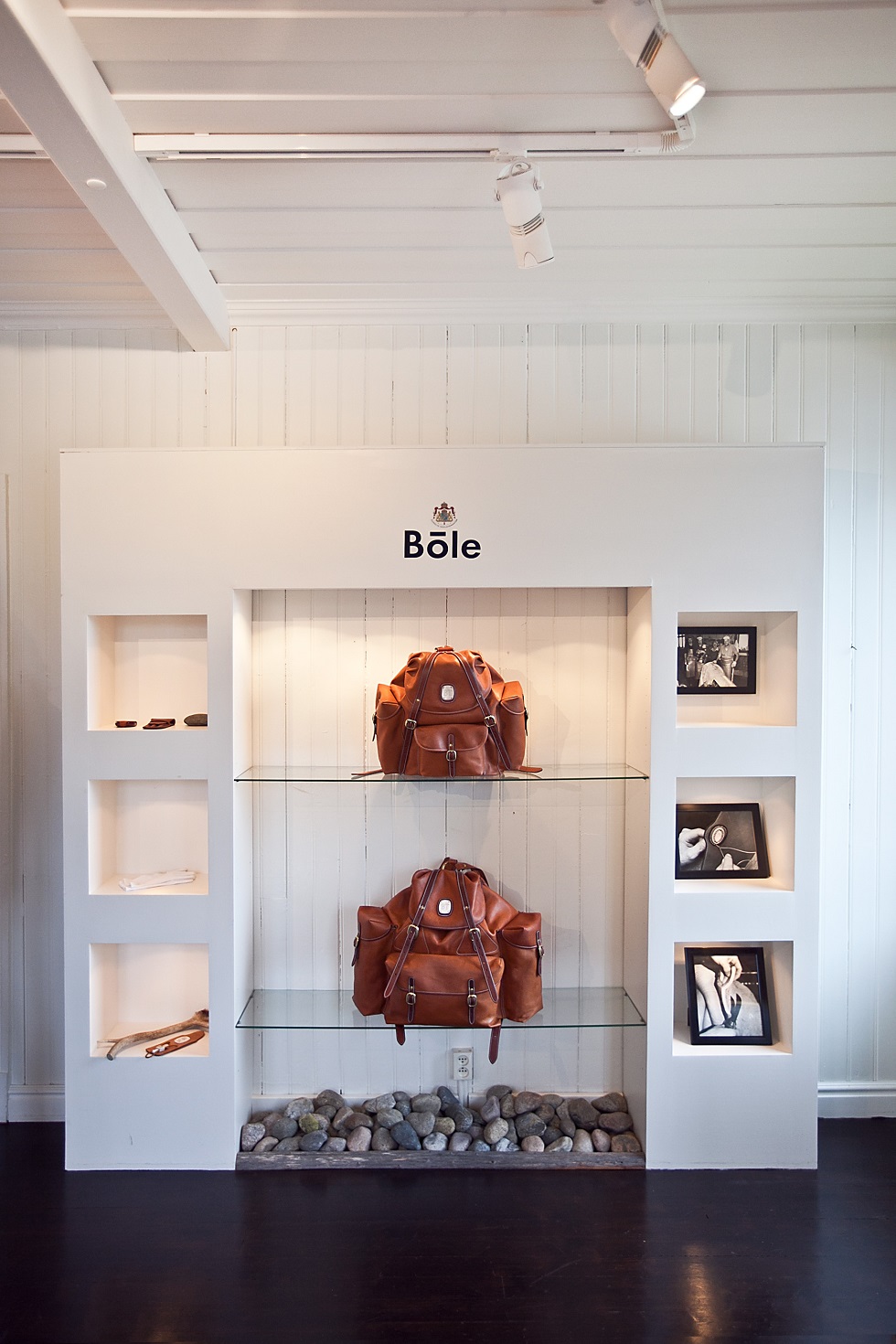
As families in Volvo sedans ogle my alabaster hide from the overpass bridge, Jan and I conclude our bonding sauna as the Swedish do, with a dip in the chest-shuddering waters of the aforementioned river: the same waters that have been filling Böle’s tanning vats since the early 20th century. It is immersion journalism at its most manhood-invertingly glacial.
Testament to the Swedes’ hospitality – or perhaps just Jan and his family’s particular class of geniality – barely an hour after meeting the Sandlunds and the close crew at Böle, this carry correspondent finds himself effortlessly embraced, and so dearly exposed in the grip of enduring Swedish custom.

***
Prior to the professional nude up, we meet Jan at the roadside entrance to the Böle shed. Humble, relaxed and to begin with well dressed, Jan is a man with genuine eyes and a sturdy handshake. “Welcome, welcome,” he says in smooth, soft rations. My boots crunch the gravel driveway separating the tannery from his home: a two story ‘50s-era house that he shares with his wife Inger, next to which, appropriately, two Volvo wagons are parked.
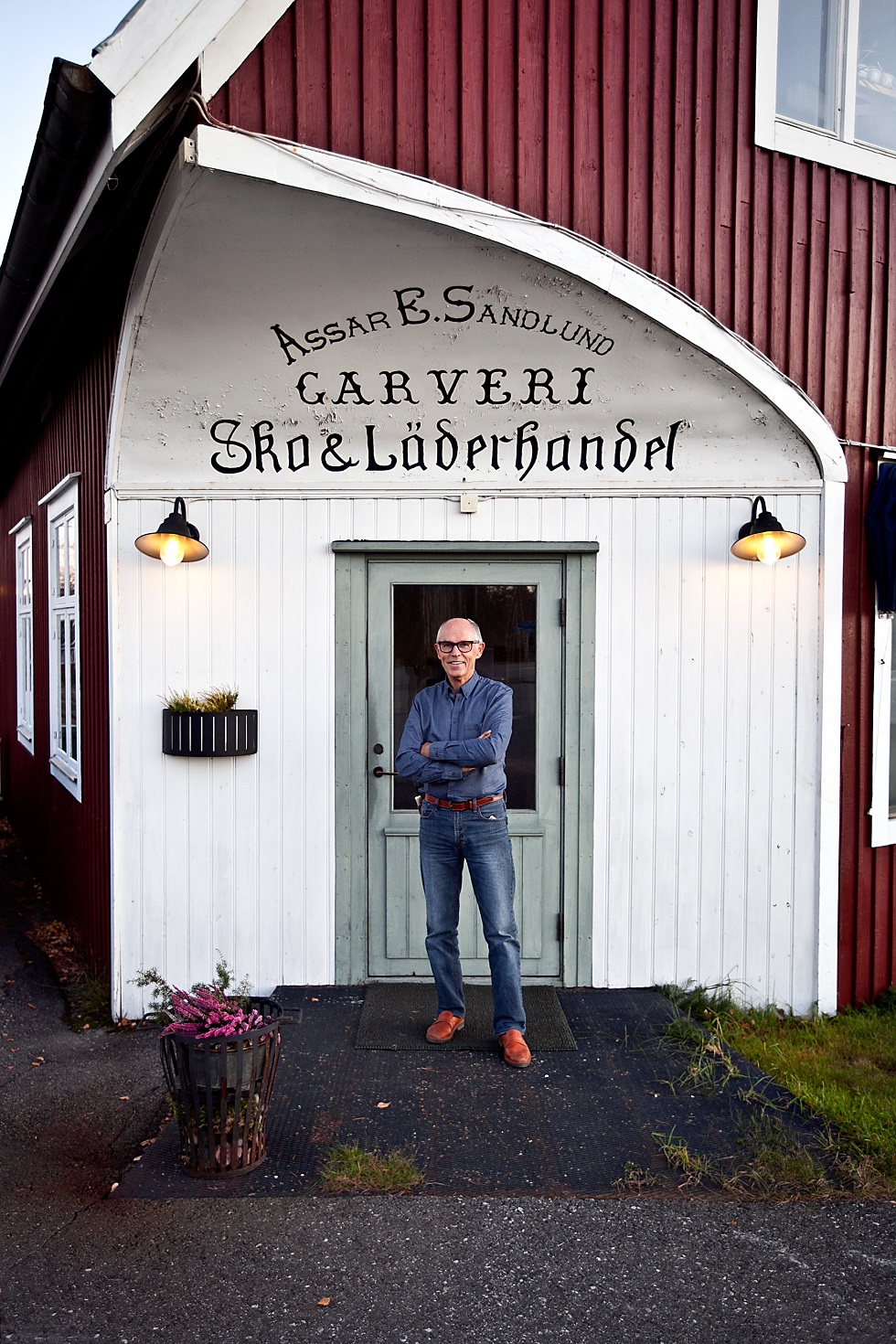
According to colleague Anita Andermalm – Böle’s dynamic fire-blonde all-rounder, who not only picked us up from the Luleå airport an hour away, but would ferry us across the far nooks of Sweden during this two-day adventure – Jan remains a “free soul” who will instinctively go without clothes before any and all business associates or prospective clients.
Through the tannery showroom, which is warm and smells of birch and spruce, Jan whisks us upstairs to the workshop. We meet Billy, designer and craftsman behind Böle’s current generation of cases and products, a quietly eccentric chap wearing a western shirt and silver strawberry moustache. He’s in the middle of birthing a new prototype: a leather shoulder bag with a unique hinge-lock system.
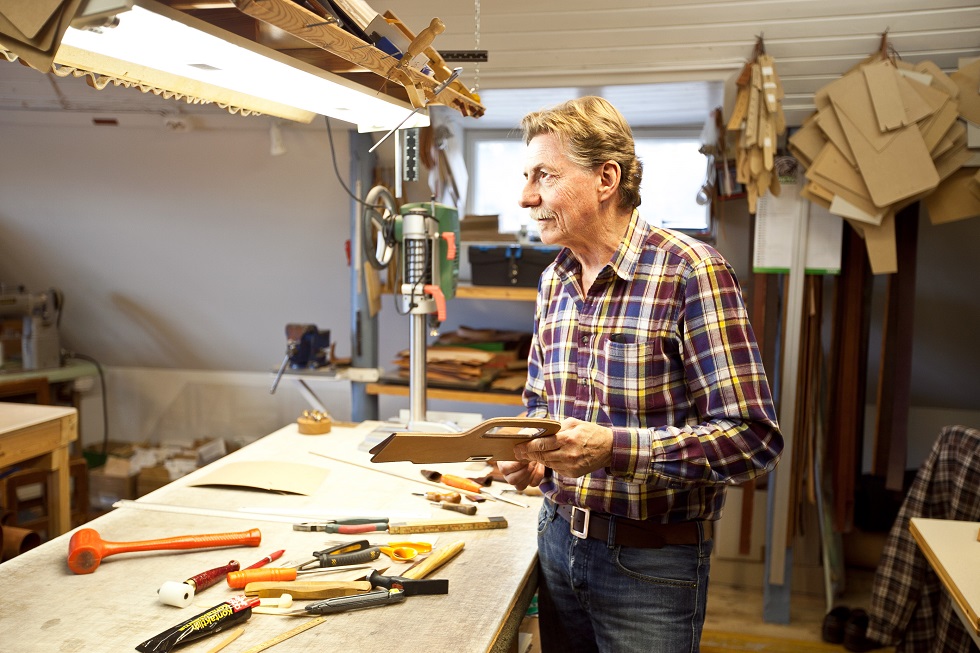
“I made a bag once for shotgun shooters,” he tells us. “They shoot at clay pigeons, and they have a bag where you can fold the lid backwards, with a hinge in it. I got the idea – thinking about it for many years – and now I think I can make a whole series – it will be just nice.”

Quality takes time, though longer for Billy, who can spend the better part of a decade in preparation mode. “When it’s ready here,” he says, pointing to his temple, “I can always make it. My hands can always do what I tell them, but the brain must be working first…otherwise you get in trouble.” Known to declare anything made in the leather world after the year 1890 “crap,” calling Billy a perfectionist is akin to calling Liberace a lacklustre showman. He is uncompromisingly rigorous: “It is hell,” he says, only half-jokingly.
"Tanning just fifty hides each year (where most commercial facilities tan 2,000 per day), the calibre of their rucksacks, briefcases and accessories is incomparable."
Böle’s qualities: durability, beauty, functionality (in that order), with simplicity an overarching tenet, is, if not solely the result of Billy’s involvement with the company, certainly mastered and furthered by his influence. Jan shows us a leather apron, built and branded for the famous Swedish TV chef Per Morberg. Then, photos of a bespoke rifle case that Billy devised for the reigning monarch, Carl Gustav XVI of Sweden. Literally fit for a king, the case is immaculate, contouring gracefully over the rifle’s scope.

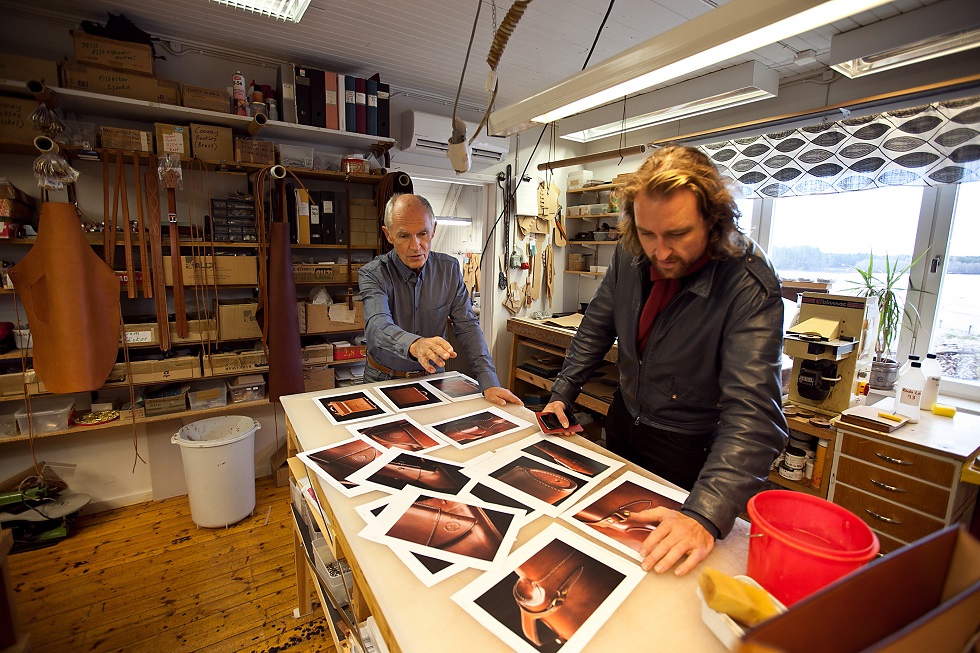
“I started to think about Western boots – the heel of them. I think I’m the only one in the world who is making it,” Billy says. “I made a western saddle once too,” showing me more pictures. “And if you can make a western saddle, then you can make anything.” It follows that Billy’s space here is thought of more as a saddlery than a workshop: his leatherwork meets a standard not seen for centuries. Jan confides later that Louis Vuitton is amongst many luxury designers astounded by his work. “He must be, I think, one of the best in the world.”

Billy started with Böle in the ‘80s, before which he worked as a window decorator in a retail store. He is a self-taught leather man – “the best kind,” chimes Jan – learning his trade from books. He crafted his first leather piece at the age of seven, after his brothers and sisters kept throwing away their toy gun holsters. “I knew I could make it better,” he says. “That’s when I really learn that you must be ready here,” tapping his temple again.
Clearly inspired by Western Americana, Billy has never left Sweden, and has no interest in doing so. Stockholm, a 14-hour drive south, is as far as he gets – twice a year, mostly for the Indian cuisine. He grew up, and still lives, a short jog from the tannery (and when he does, he jogs in denim).
"Quality takes time, though longer for Billy, who can spend the better part of a decade in preparation mode. “When it’s ready here,” he says, pointing to his temple, “I can always make it. My hands can always do what I tell them, but the brain must be working first…otherwise you get in trouble.”"
Here in the saddlery, over peaceful views of the rolling Pite and forest surrounds, Billy is free to create, and Jan and the business have only to benefit from his artistic freedom. “We always try to find the best archetype,” Jan says, and though uncertain whether Billy’s prototype will make the cut, he remains philosophical: “We will learn something from it – we are constantly exploring.”

One of the many differences in Böle’s approach to carry is in their detailing, particularly on crucial trimmings like handles. Jan sets it straight: “Most companies use plastic or metal. You see it with Italian briefcases: very nice design, but the handle is only, say, 1.5mm maximum…so the sweat in your hand de-tans the leather over time, and since they don’t use any balm, it becomes brittle, and breaks.” Billy looks up from his station. “People think too shortsightedly. They don’t take responsibility – for a lifetime.”

With the handle of his new creation proving too thick to be machine-sewed, Billy takes to it by hand, vice-locking the piece in place, tending steely composure on each 45-degree-slanted stitch. “That’s going to be beautiful,” he whispers. He glides and smooths the ridge of the handle against a whirring beveller, then affixes it to the body. “I think it is…genius,” he says. “Oh yess,” in a whisper. “It’s like making rea-lly good mu-sic.”
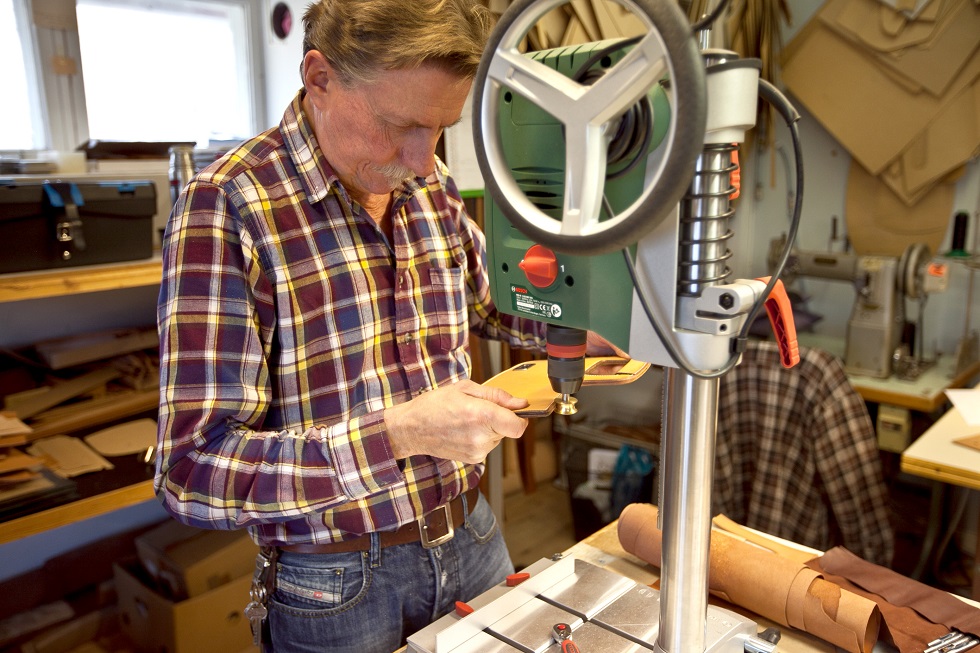
Adamant that this is “only the beginning,” even Billy thinks it’s appropriate the new arrival is given a preliminary christening. “Chanelle,” he says, after a brief pause, evoking the hinge style, and fashion house, of the same name. “The Chanelle No. 1 – that sounds nice.”
***
Åke and the tannery
Downstairs, Anita pops the cork off a bottle of birch-infused sparkling wine, pairing it with hors d’oeuvres of salmon and roe, and we sit and sip over the crunch of crackers amidst the bucolic scent of spruce.
"One of the many differences in Bōle’s approach to carry is in their detailing, particularly on crucial trimmings like handles."
With Jan retired as head tanner, Böle’s tanning mantle rests now in the hands of Åke, a one-time biochemist-electrician with strong hands and a bespectacled gaze. He is also a tango dancer, which, it emerges, is a popular pastime for Nordic tanners. Jan also dances – he tells me he’s planning a private club: “Tanners Who Tango,” at best a club of two which, I suggest, might get a little weird.
After refreshments, we’re chaperoned into the tannery. It’s a split-level concrete and timber fit-out. Taxidermised animals and skins sit by windowsills. Faded pictures of Jan, Oskar and Assar grace the walls. There’s a picture of the Swedish Royals here too, dining in the tannery on a special visit years ago with Jan and co. (“There were bodyguards everywhere,” Jan mentions). Embedded in the floor, vats of water and spruce soak hides at various stages of transformation. The water in these vats is as old as the tannery itself: while they may have been topped up over the decades, it’s never been changed – today’s hides still soak up traces of the same first pour that grandfather Oskar added a century ago.
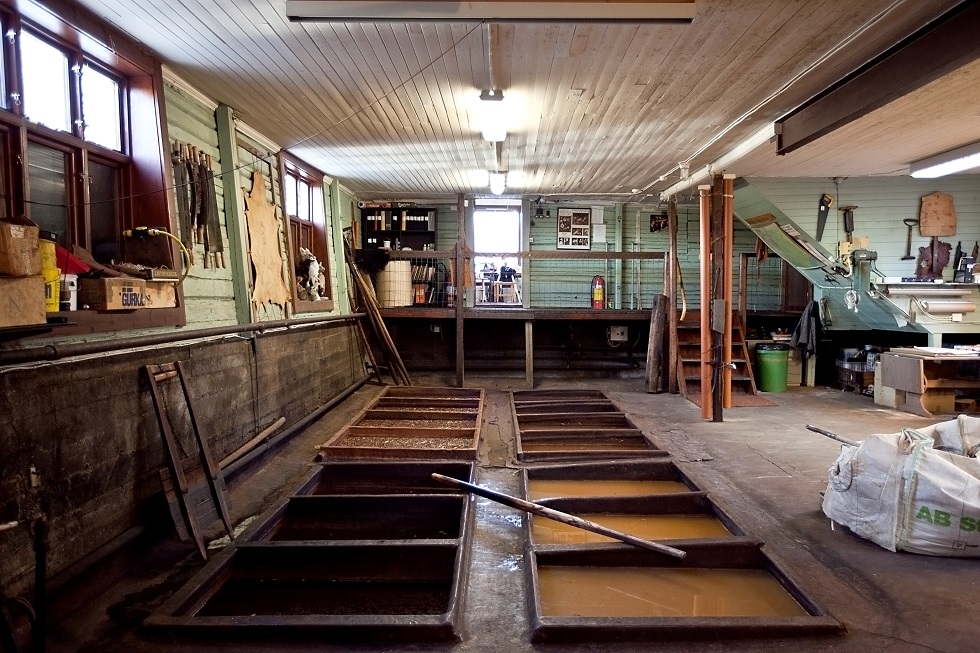
Like tango, tanning is an involved though rather uncomplicated process. “The big story is it’s quite simple. The other side is you have to test every step to make a right adjustment,” says Åke, thumbing a small cutting of leather from a Swedish cowhide that’s been soaking in the vats for 11 months. He peers at it though what looks like a microscope, searching for the precise level at which the mix has penetrated the grain.

The basic science to tanning is this: molecules from an agent, mixed with water, penetrate an animal hide over a period of time. For hundreds of years cultures tanned with natural agents – barks, trees and plant materials. It would take a few months to produce a good, thoroughly tanned hide. Even if they didn’t know exactly how, early tanners knew their methods worked: they’d taste the mix, feel the strength of the liquid, chew the hide, and know what stage of completion it was in.
After 1950, chemical agents began to replace natural materials. This sped up the process, but threw quality to the dogs. Until that decade, Böle, under Oskar, relied on steady demand for their utility goods: leather gloves, harnesses and traditional peaked shoes. Popular rubber footwear, compounded by the new chemical-driven process, put many tanneries like Böle out of the game. It was a tough time for the industry – for the ‘old ways’ of doing things – yet Böle, under Assar, retained its principles and upheld the traditional methods. Under Jan and Anders, it’s one of a handful on the planet today that still do.
"The water in these vats is as old as the tannery itself: while they may have been topped up over the decades, it’s never been changed – today’s hides still soak up traces of the same first pour that grandfather Oskar added a century ago."
Even when the ‘old ways’ thrived, few tanneries ever used spruce bark. It is a slower and less ‘strong’ agent – its molecules are much larger than other barks, which is why Böle’s tanning period, at just under twelve months, is much longer than most. Given their philosophy about these things, they aren’t in any rush, and the unique finish that it delivers is well worth the final product: a colour, and undamaged surface so beautiful that it requires no further treatment. Stiffness-wise, spruce is perfect for making products that last the distance. Other agents play a cameo in the final stages: tree extracts with smaller molecules, like quebracho, oak and mimosa, penetrating the nooks of the hide that spruce can’t. “Mixing tanning sources always produces a better leather,” says Åke.

Each batch of hides demands 200-250 kg of spruce, sourced each spring from the forests nearby when the pH level is right in the sap. Controlling the pH (the concentration of hydrogen molecules in the tan) is crucial – a pH too high can lead to swelling: the bark molecules bloat the hide’s surface, preventing further tan penetration, leading to a hide under-done.
"Even when the ‘old ways’ thrived, few tanneries ever used spruce bark. It is a slower and less ‘strong’ agent – its molecules are much larger than other barks, which is why Bōle’s tanning period, at just under twelve months, is much longer than most."
Hides soak up the spruce soup in incrementally strengthening concentrations. “Older tanners knew that you had to start with a lighter, and older liquid; the strong water is always for later on,” says Åke. I dance with him carefully around each vat. All look fairly easy to fall into. At 1 metre 30 deep, you wouldn’t want to. He evokes the film ‘Perfume’, in which the protagonist does exactly that; Åke has a couple of times: once, memorably, while wearing his tango getup. At age seven, Jan fell into vat #13.
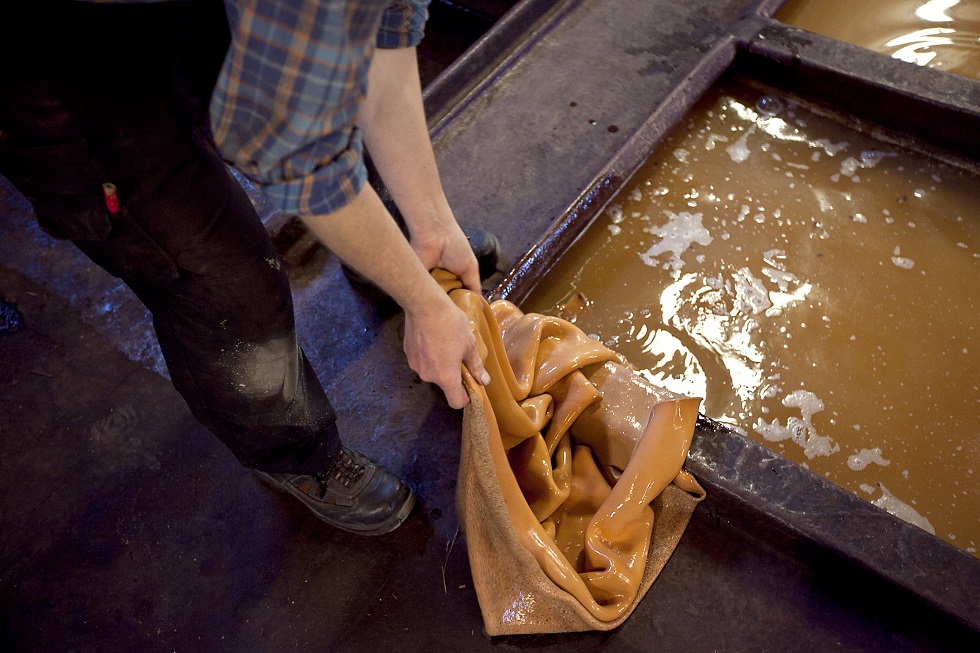
With a wooden staff, Åke lures a hide from the depths of vat #6. It looks rubbery, stretchy, and silken. He checks another in the final stages; slightly darker, a little thicker. I’m still taken by how pleasant it smells in here – spruce and only spruce. Åke fills me in that Böle receive their hides pre-limed and de-haired: a process called ‘splitting’, which is what induces the acrid, buttery stench typically associated with these sorts of facilities. They used to ‘split’ in-house, he says, pointing to the wooden liming drum in the corner, and the faded action shots of Jan and his father on the timber wall. “Assar could do four hides an hour. Jan, well…he has been to the university, so he could only do two,” he laughs.
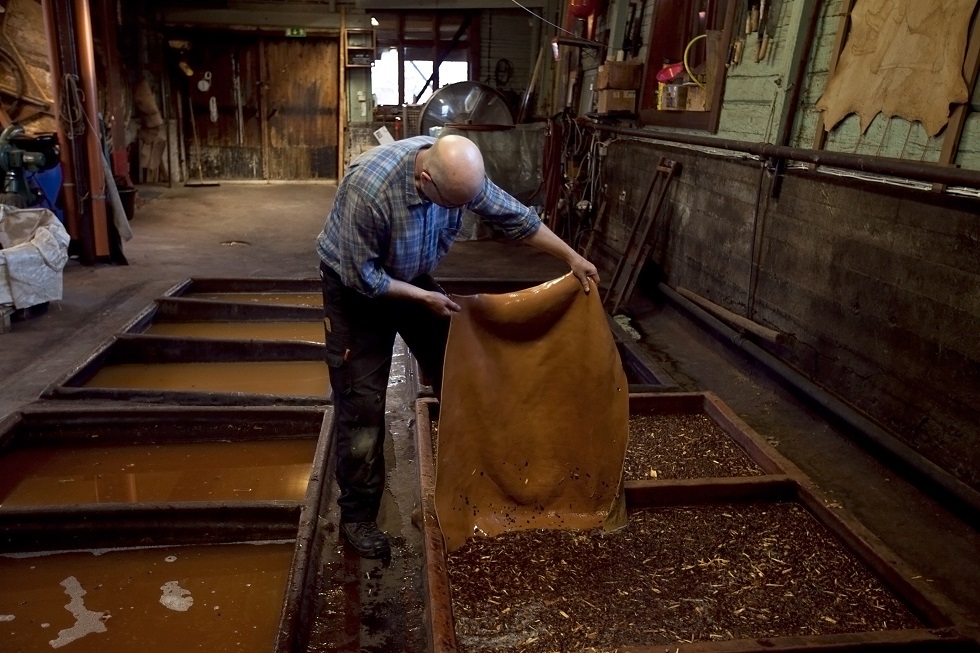
When each hide is finally pulled, shaved down, laid out and manually stretched, they’re nailed onto wooden frames and hung upstairs in the gambrel roof to dry. When dried, Billy will arrive to give judgement, feel each one, peer at the grain and – if, and only if satisfied – claim them for the saddlery, before transforming each into the next Böle masterpiece.
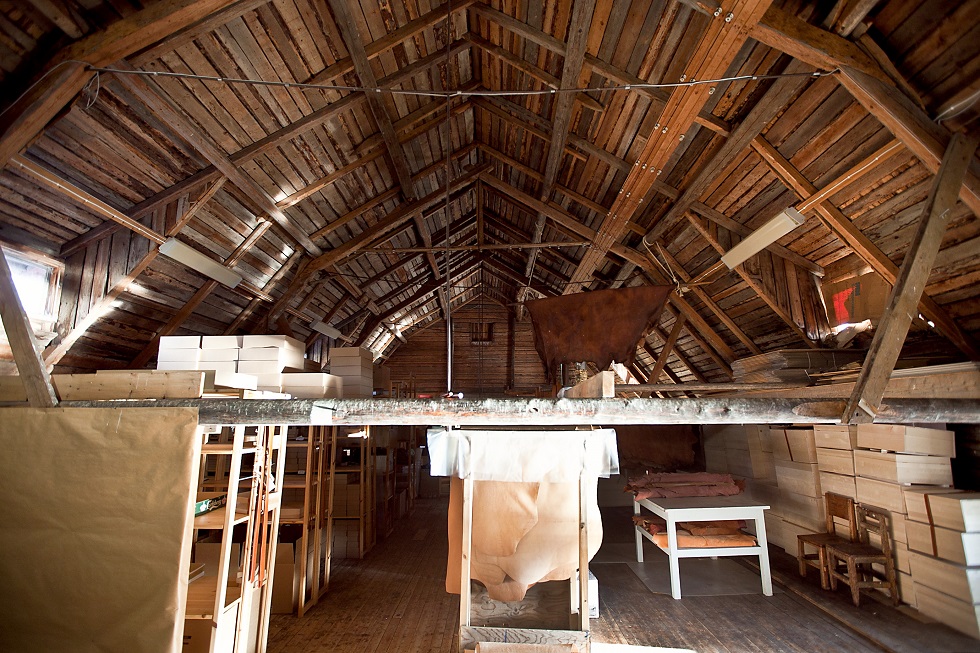
***
The Sauna
Getting dark out, Anita informs me that Jan has prepared the sauna. Bereft of a change of clothes, I inquire as to my designated attire. “Jan will be naked,” she says. “Completely naked.”
In shared liberation, free of the obfuscation of attire, Jan and I riff on the ebb of life, travel, retirement and the leather game. We enjoy rounds of schnapps and kabana from a small ramekin. He douses the sauna coals, and another wall of steam punches us in the t-section.
Though it might have seemed a given, it wasn’t always a given that Jan would pursue the family business from the outset. Hippy sensibilities prompted him and Inger to backpack and volunteer through Bangladesh during the ‘green wave’ of the 1970s. Afterwards, he returned home to begin a career as a psychologist, until the mid-80s when the family legacy beckoned. “I was more interested in being on the entrepreneur side of things,” he says.
"Popular rubber footwear, compounded by the new chemical-driven process, put many tanneries like Bōle out of the game. It was a tough time for the industry – for the ‘old ways’ of doing things – yet Bōle, under Assar, retained its principles and upheld the traditional methods. Under Jan and Anders, it’s one of a handful on the planet today that still do."
Jan’s entrepreneurship pivoted Bōle from rural Scandinavian novelty into a high-end, though far from ostentatious, international brand. The arrival of Billy, with his knowledge and leather virtuosity, helped manifest new, lasting archetypes: the Minister Briefcase, the Royal Knapsack, and the King Rucksack. With son Anders now at the helm, the brand is pivoting again, freshening up to stay relevant in the emerging digital environment. “I often say: I’ve dug out the diamond – he (Anders) is the one who is going to cut and set it.”
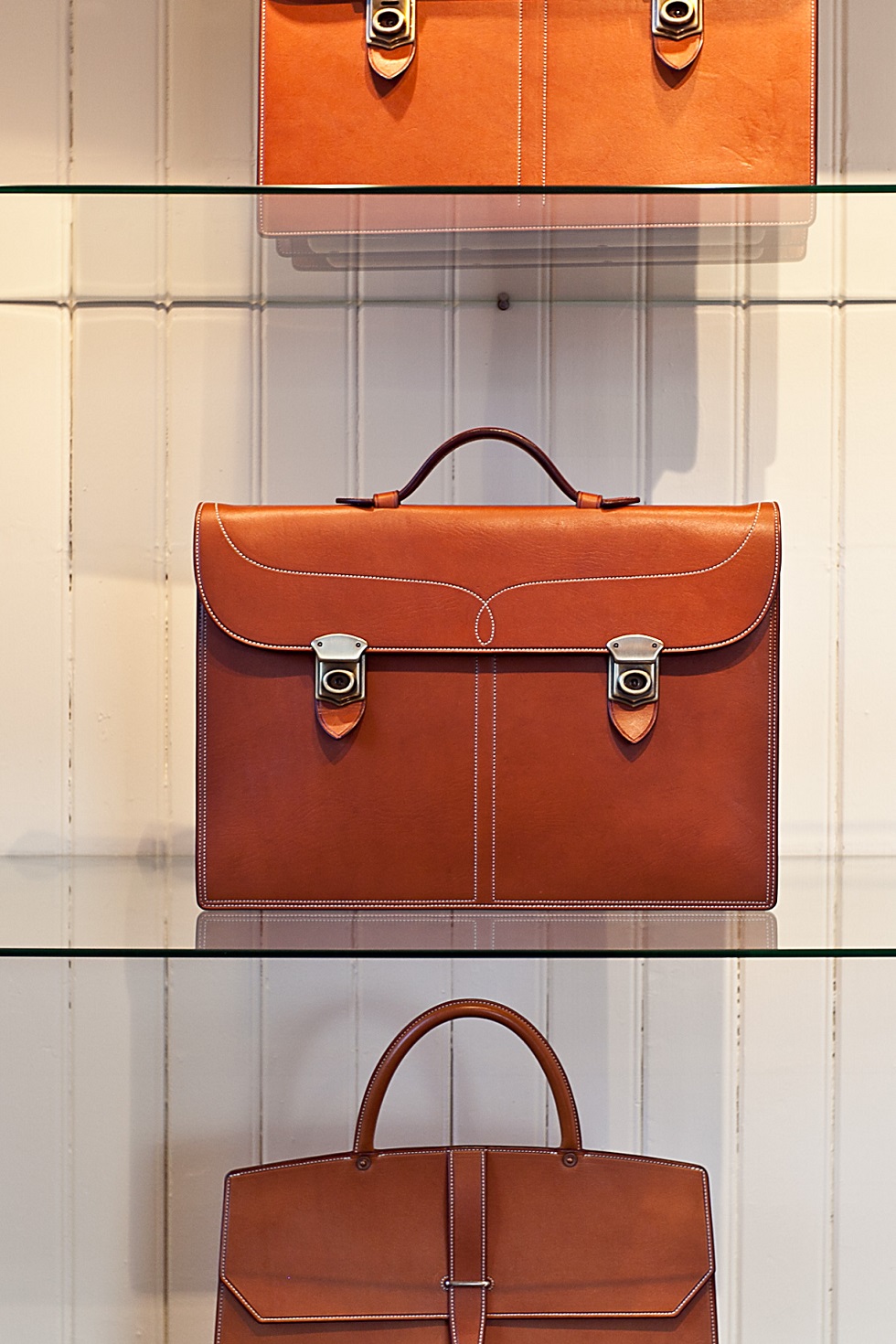
Receptive, curious, always eager to learn, when you tell Jan something, he inhales in a little burst of air and breathes out a hushed ‘ja’. He loves learning new words, taking note, storing them for future use. “You know, I can say ‘I am a tanner’ in eight different languages.” (His favourite, Japanese: 私はタナーです, or ‘Watashi wa tanādesu’).
"With son Anders now at the helm, the brand is pivoting again, freshening up to stay relevant in the emerging digital environment. “I often say: I’ve dug out the diamond – he (Anders) is the one who is going to cut and set it.”"
Post-sauna, post-river plunge, my manhood slowly convalescing, we return to the showroom with Anita. Aside from online (the result of Anders’s Gen-Y nous), you can only buy Böle’s goods here, and a handful of the most prestigious stores around the world. Exclusive UK department store Harrods jumped at the chance to stock them (“Please place your bags here” remarked the fastidious English merchant on their first meeting). It was a similar scene in Russia: “We got admitted on our first visit to many prestigious shops,” Jan tells me. “We made an appointment directly with a government official. He bought directly; paid in cash. Only the most expensive things, like the Minister Briefcase…also some gloves, lined with mink.”
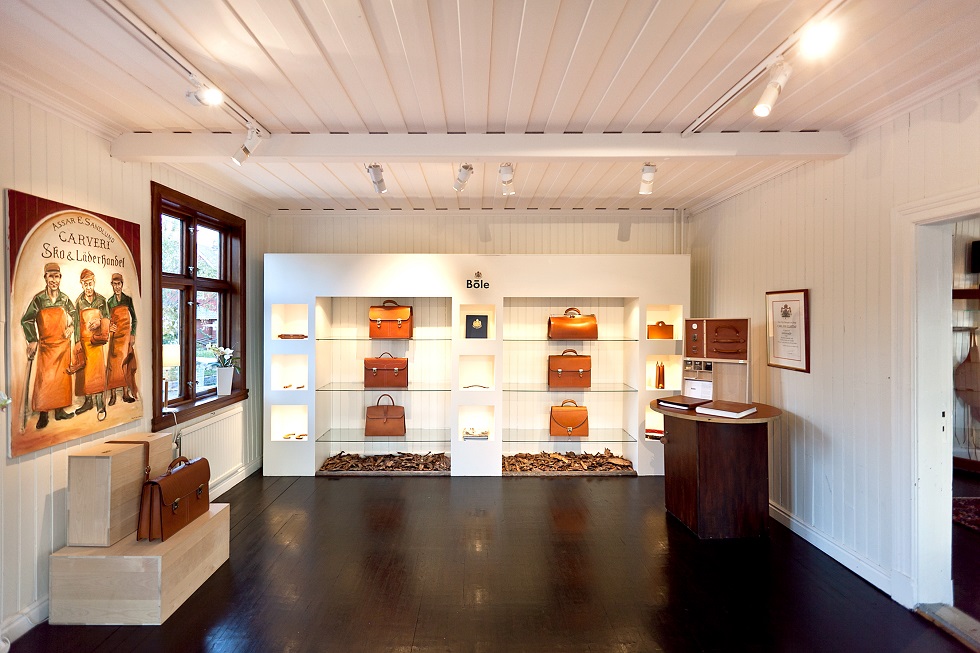
Böle’s bags are a bit like rare vehicles: every item sold is numbered and logged, with full ownership and history recorded. Owners can send their bag in each year for an annual service. “We do things that last for lifetimes,” says Jan, often joking with customers over the age of 50 that there’s probably no use in them purchasing an item of their wares – it will simply outlive them.
"Bōle’s bags are a bit like rare vehicles: every item sold is numbered and logged, with full ownership and history recorded. Owners can send their bag in each year for an annual service."
The Minister Briefcase is, like every Böle offering, a stunning piece. When ordered, it’s shipped in a wooden birch box tied by a leather strap (“It makes an excellent belt,” Anita says, “and the box can be used to plant flowers”). Owners of a Böle King Rucksack, meanwhile, receive their initials engraved on an exterior plate made of reindeer horn. The man who crafts the plates is named Virgil, a 95-year-old who competes in, and usually wins, engraving competitions throughout Europe (the “new young guy” in line to replace him is 65).
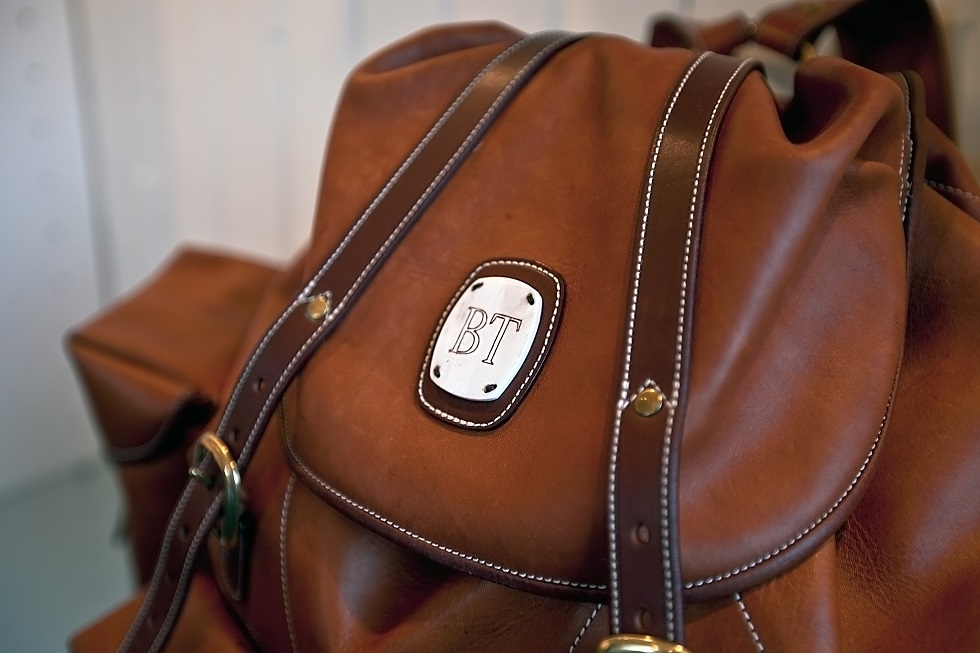
Anita chauffeurs us in the Volvo through the brisk night to a restaurant in the former brew house of the sleepy town of Piteå. We drink wine, dine on reindeer tartare and elk, and bask in each other’s warm company.
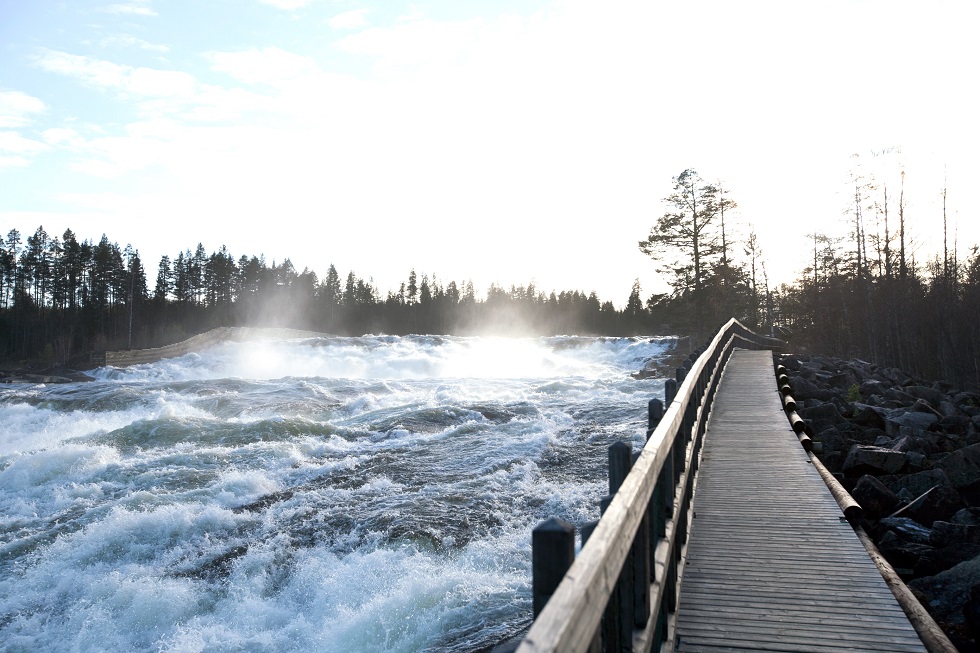
The following morning we’re treated to a journey through stunning Swedish Norrland: to the remarkable Treehotel of Harads, where a UFO and ethereal Mirror Cube stare down the dramatic Pite Valley; then Storforsen Falls, a raging rapid on the Pite, 70km upstream from the tannery. Jan sears reindeer meat on a hot plate by the roaring water, and we eat it in flatbreads by the forest.
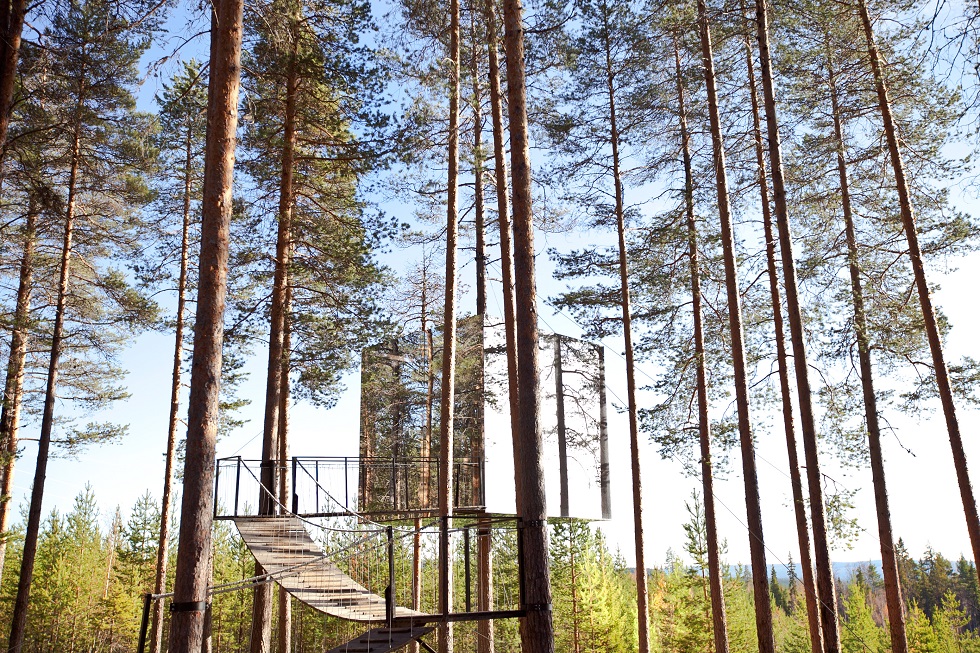
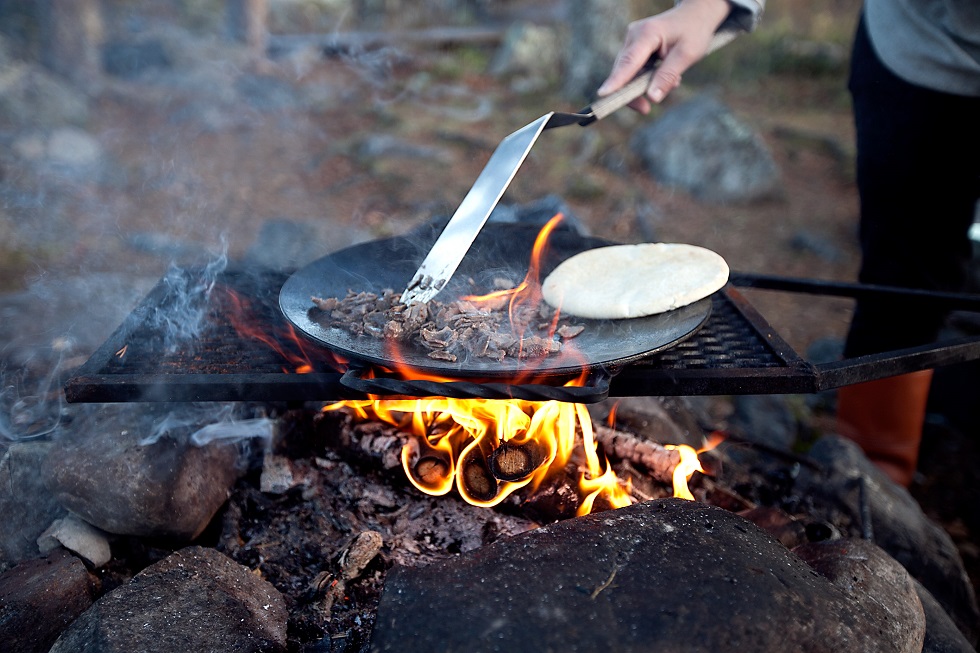
En route back to the tannery, Böle is tranquil. Jan points to the house where his primary school teacher used to live; then Billy’s house, and an immaculate red cottage built in the 1660s that somehow looks fresher than all the others. The last of the October sun dapples through the windscreen as we pull into the gravel drive. I eye the sign written in Scandinavian cursive above the tannery door: Assar E. Sandlund Garveri. Sko & Läderhandel, a final time.
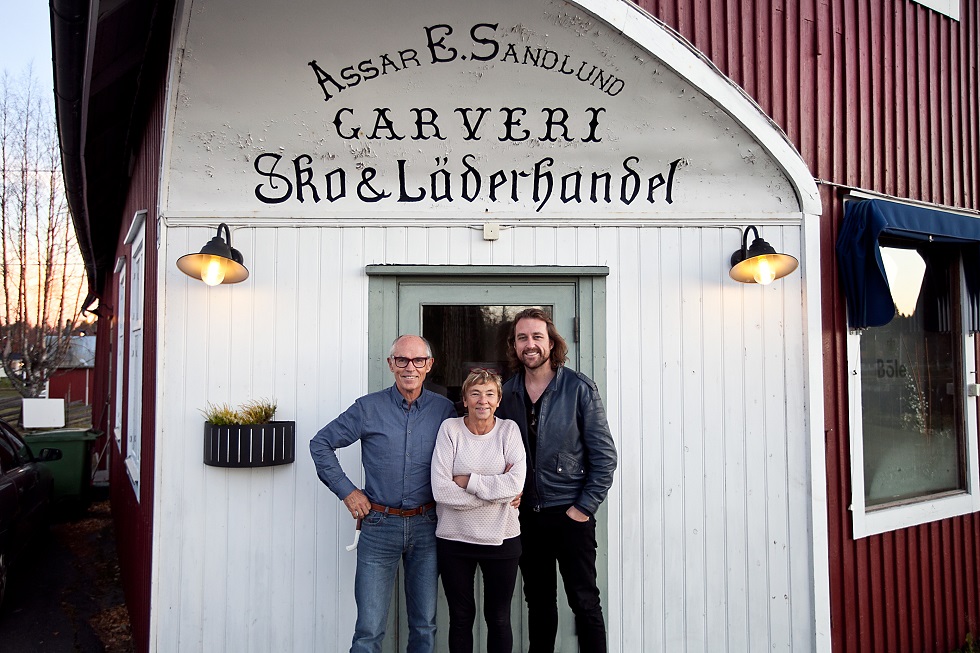
Later that night, Northern Lights dance like emerald lava across a starry dark Arctic sky. Images of Böle and the Sandlunds imbue: their lineage, their legacy. A family first, company second: one that still insists, in a frequently irresponsible world, on taking actual and meaningful responsibility for every one of its actions. “You will never find us resorting to quick solutions,” Jan’s voice, filtering through my head. Rare it is to encounter a business practicing so in accord with tradition, in synergy with place – an exemplar of authentic sustainability. Quality is nothing if forced. Things take time. In this ‘place to live’ the old ways – the best ways – remain the naked truth.

Photography by Honor Kennedy





 Carry Awards
Carry Awards Insights
Insights Liking
Liking Projects
Projects Interviews
Interviews
